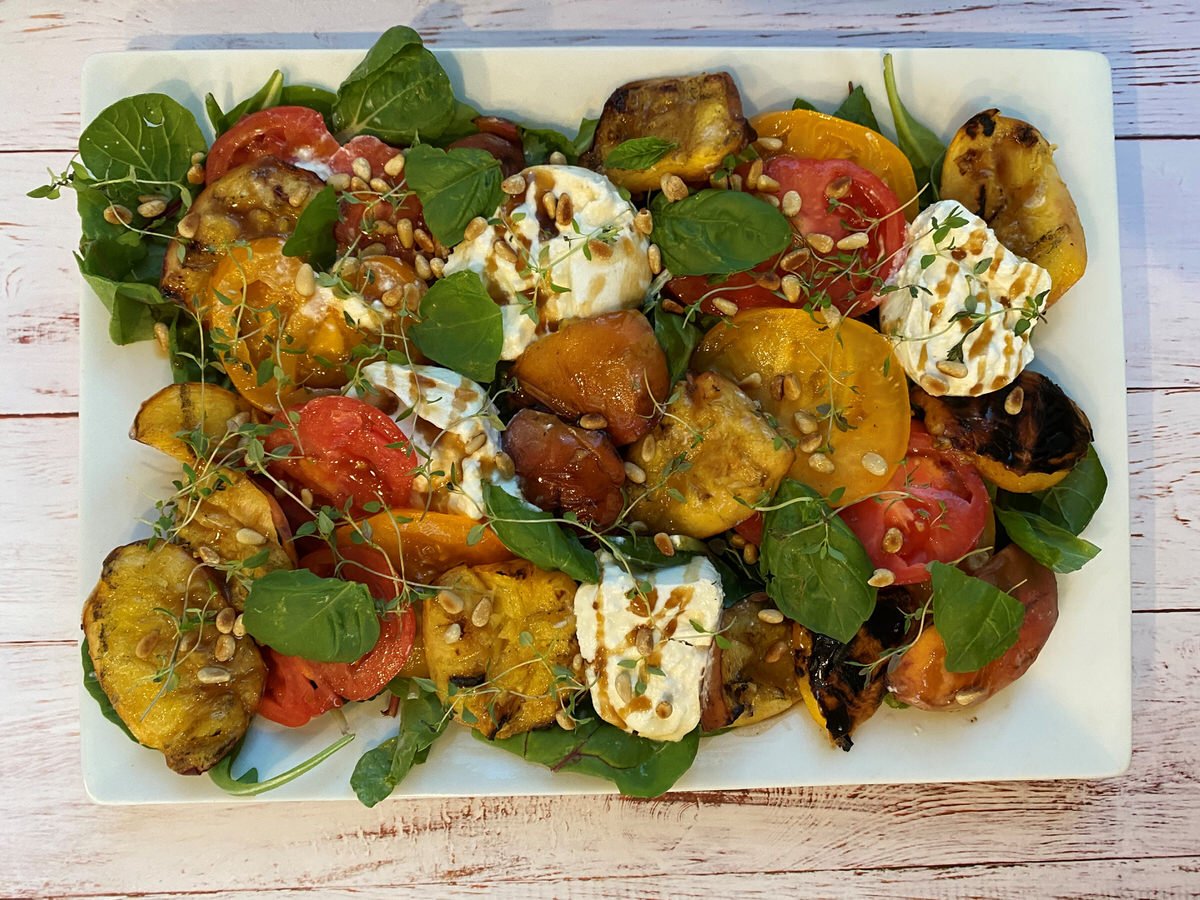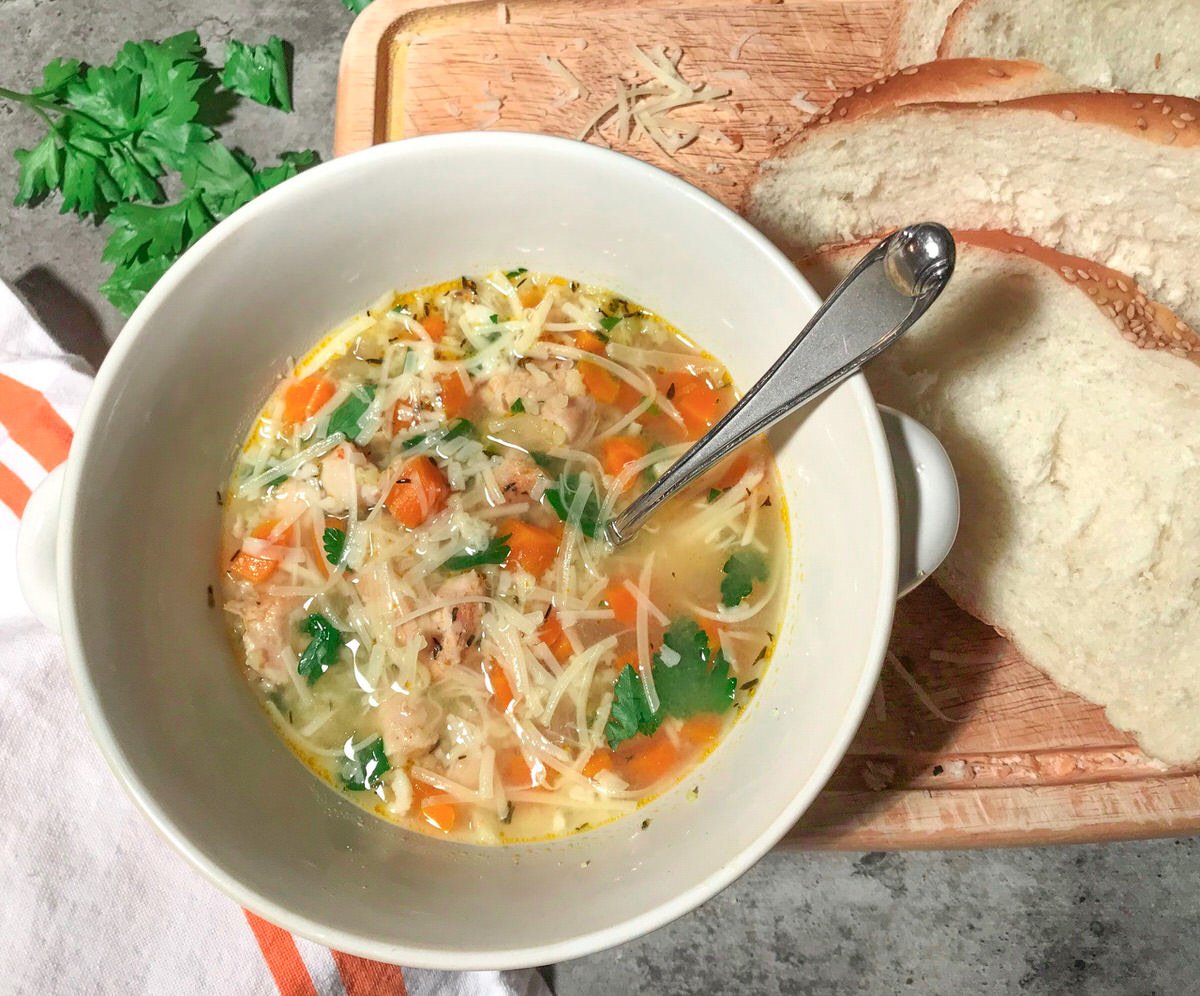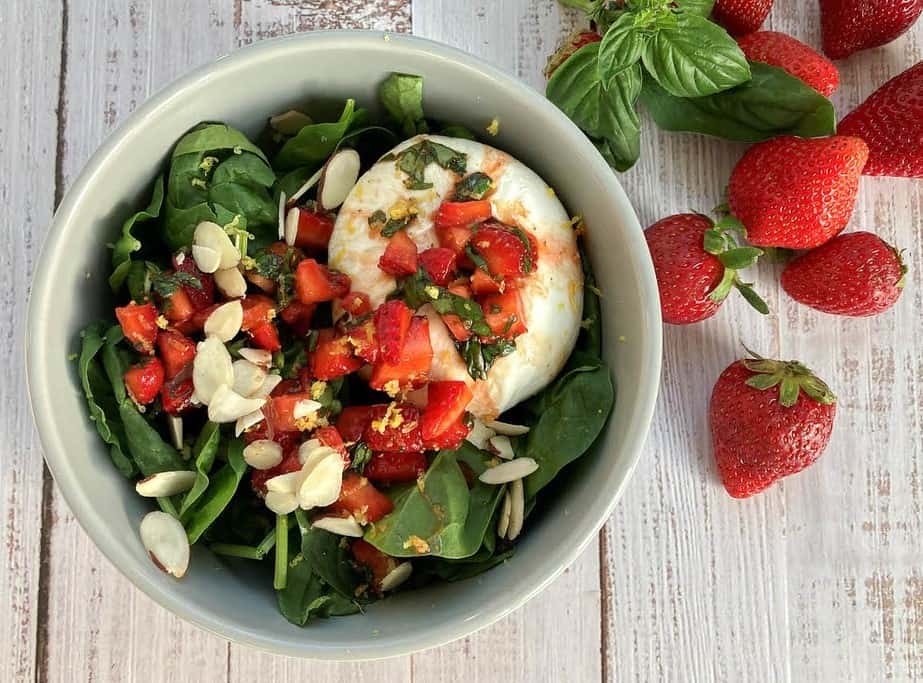Frittata vs. quiche – what is the difference? Although a frittata and quiche are both types of egg dishes that use similar ingredients, there are some key differences.
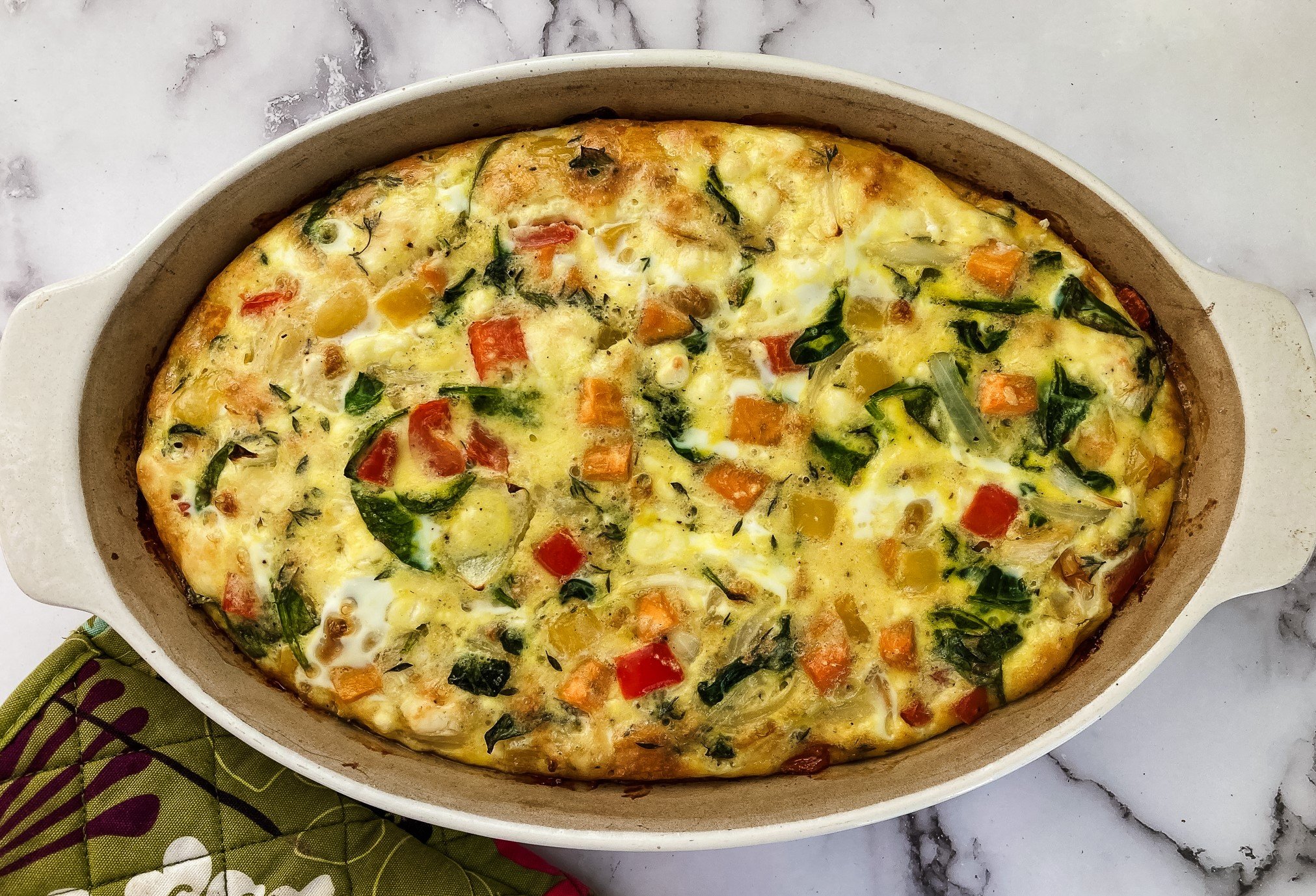
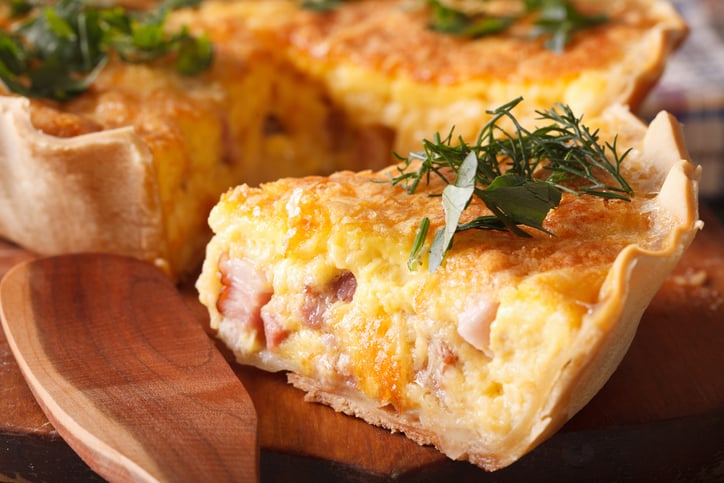
First let’s start by looking at the similarities. Both a frittata and a quiche use an egg base with the addition of dairy, fresh herbs, some type of cheese, vegetables, meat or seafood. That’s where the similarities end.
A quiche is a savory, egg-based dish that’s cooked in a flaky pastry crust. The word quiche is a French word. The word frittata is an Italian word and is essentially an unfolded flat, thick omelet full of veggies and/or meat.
Now, let’s take a closer look at the main differences between a frittata and a quiche.
Crust vs. Crustless
The biggest difference and most obvious distinction between a frittata vs. quiche is the lack of crust. A frittata is always crustless, but a quiche usually has a homemade buttery crust baked in a pie plate. While there are crustless quiche recipes, a traditional quiche has a flaky pie crust as the base for the quiche filling.
Cooking Process
Another key difference in a frittata vs. quiche is the cooking method and type of cookware used. A quiche is baked in a pie pan with its savory pie crust. A frittata is started on a cooktop in a cast-iron skillet or oven-safe skillet and then finished in the oven. You can also bake a frittata in a stoneware baking dish after partially cooking the vegetables.
Cooking Time
A frittata takes less time to cook than a quiche. A frittata is started on the cooktop and finished in the oven. From start to finish, it takes about 20-25 minutes to cook. Since a quiche is more custard-like, it takes much longer for the egg to set – typically between 40-55 minutes.
Egg to Dairy Ratio – Frittata vs. Quiche
Another one of the most important factors in distinguishing a frittata vs. quiche is the egg to dairy ratio. Frittata recipes use less dairy, while a quiche recipe uses more dairy.
The egg to dairy ratio in a quiche is 1 egg to 1/2 cup dairy. Most quiche recipes in a 9-inch pie plate will use only 3 eggs, but 1-1/2 cups of dairy. The pie crust increases the amount of stability, allowing for more of a custard base. The type of dairy in a quiche is typically whole milk, heavy cream or half-n-half. The ratio of eggs to dairy in a quiche creates an egg custard filling.
This is a significant difference from a frittata which has significantly more eggs and less dairy. In this recipe for a Baked Vegetable Frittata, I use 8 eggs and only 1/2 cup of dairy. You can see that the egg to dairy ratio is significantly different in a frittata. I used a lot of vegetables partially cooked in a frying pan and chose to cook the frittata in a stoneware baking dish, so I only needed 8 eggs due to the size of the dish and the large amount of veggies. However, many frittata recipes call for a dozen eggs and only 1/2 cup of full fat dairy such as whole milk, sour cream, crème fraîche, heavy cream, etc.
Texture & Taste
A traditional quiche has a custard-like texture that is silky, smooth, light and airy. On the other hand, a frittata has a firmer texture. A frittata is somewhat of a baked unfolded omelet full of veggies, fresh herbs, cheeses and sometimes meats or seafood. A frittata often includes potatoes as well. Both are savory healthy breakfasts packed with protein and vegetables and can be served for special occasions or just a nice weekend breakfast.
There are so many different ways to make a frittata or a quiche. The filling options and varieties are limitless.
For a sweet and savory frittata that uses sweet potato, bell pepper, spinach, onion, honey goat cheese, and a couple other cheeses as the filling ingredients, try this Easy Baked Vegetable Frittata recipe. The combination of eggs, fresh herbs and sweet and savory fillings is incredible.
Frittata vs. Quiche Summary
| Frittata | Quiche | |
|---|---|---|
| Crust or no crust | No crust | Usually a crust for traditional quiche |
| Cooking Process | Start on the stove, finish in the oven, usually in a cast-iron skillet | Baked in a pie plate |
| Cooking Time | Approximately 20-25 minutes | Approximately 40-55 minutes |
| Egg to Dairy Ratio | 8-12 eggs to 1/2 cup dairy | 1 egg to 1/2 cup dairy |
| Texture & Taste | Firm, tastes like a thick unfolded omelet | Silky, smooth, light, airy & tastes like an egg custard |

